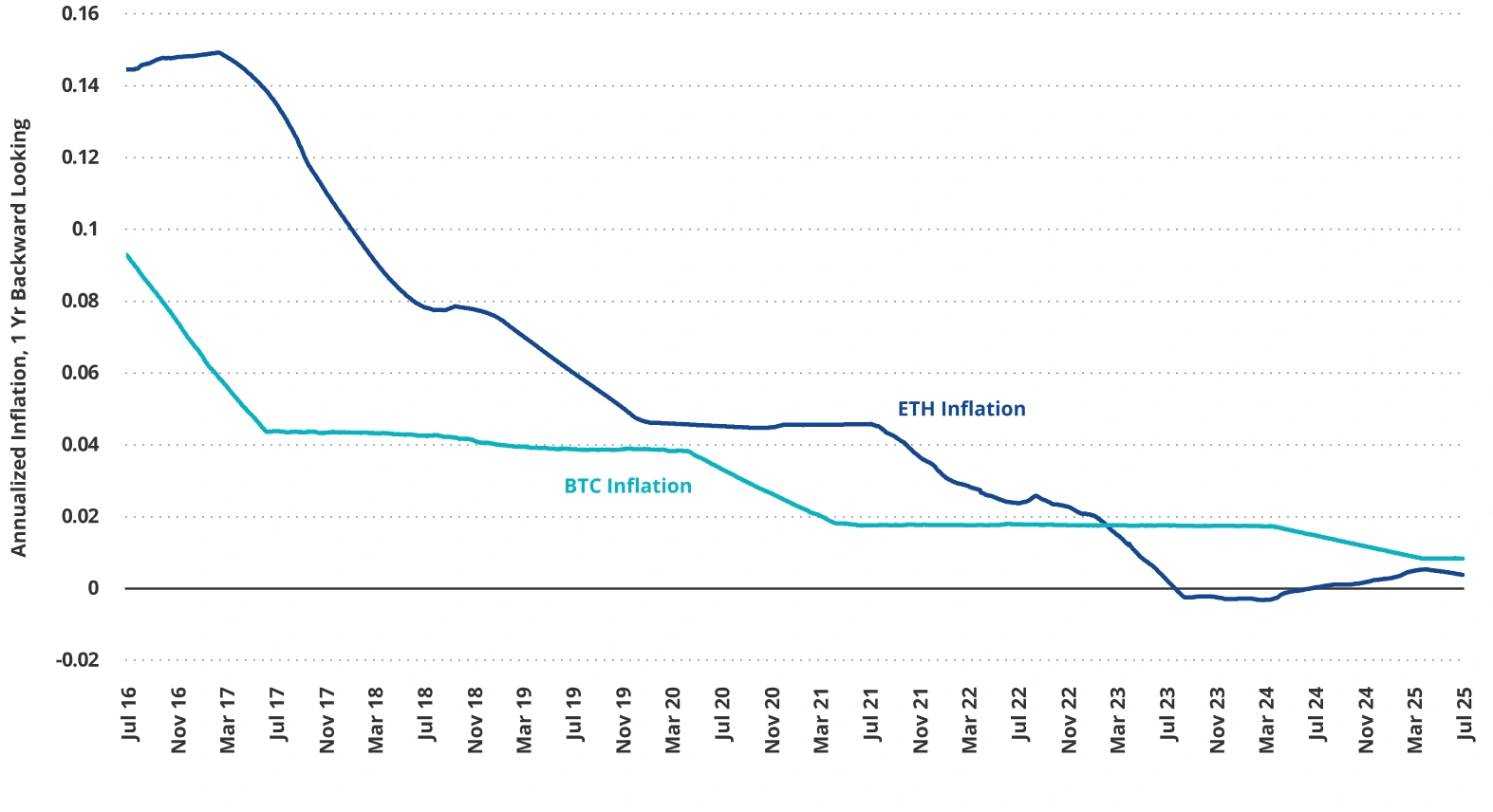According to VanEck's July cryptocurrency market review, Ethereum could challenge Bitcoin's long-standing position as the ultimate store of value in the digital asset ecosystem.
Matthew Sigel, head of VanEck's digital asset research team, believes that Ethereum's increasingly deflationary monetary structure, staking yields, and token-holder-centric governance may offer advantages over Bitcoin's rigid design when analyzing changing fiscal trends and macroeconomic policy shifts.
The report states: 'Ethereum may form an economic system more favorable to its token holders than Bitcoin.'
Ethereum treasury bonds are on the rise.
Bitcoin's fixed supply cap, consistent issuance schedule, and high liquidity make it the preferred choice for companies seeking to hedge against inflation. Bitcoin's monetary policy has remained largely unchanged since its inception, often cited as its greatest strength. However, VanEck believes this rigidity may also be a weakness.
The development momentum of Ethereum-based Digital Asset Trusts (DATs) is strong, not only because they can withstand price increases but also because they can generate yields. Companies holding ETH can stake their assets to earn validator rewards and collect network transaction fees.
Additionally, ETH treasury bonds can participate in decentralized finance (DeFi) protocols to further enhance returns, while Bitcoin holders are less likely to adopt such strategies.
The report notes that the ETH treasury is replicating traditional BTC strategies, such as providing financing for additional purchases or options hedging, while also hoarding ETH at a faster pace through staking and DeFi.
The transition to deflation reinforces this view.
The monetary evolution of Ethereum has played a central role in its growing appeal. When Ethereum was first launched, its inflation rate was higher than Bitcoin's (14.4% vs. 9.3%), and it has since implemented two fundamental changes that radically altered its supply dynamics.
The first was EIP-1559, launched in August 2021, which implemented a mechanism to destroy base transaction fees, effectively removing ETH from circulation with each network interaction.
The second was in September 2022, when Ethereum achieved a milestone transition from proof-of-work to proof-of-stake through 'the Merge'. This reduced ETH's daily issuance from about 13,000 to around 1,700.
As a result, by March 2023, Ethereum's inflation rate had fallen below that of Bitcoin. Between October 2022 and April 2024, the supply of ETH actually decreased, with an annualized deflation rate of -0.25%. Although ETH's inflation rate has slightly risen since then due to increased network throughput, its annualized deflation rate remains only +0.38%, compared to Bitcoin's +0.84%.

Inflation trends between BTC and ETH from July 2016 to July 2025. Source: Glassnode.
On the other hand, Bitcoin continues to rely on inflation issuance to reward miners, raising questions about long-term sustainability, especially in the context of halving events that reduce miner rewards.
In the past year, Bitcoin miners earned only $278 million from transaction fees, while network inflation brought in $14.6 billion. If Bitcoin's price does not keep pace with the decline in block rewards, the network's security model may face pressure to adjust.
One proposed solution is to introduce a hard fork for new monetary inflation, which would contradict one of Bitcoin's fundamental principles: 'fixed supply'.
VanEck's argument is supported by the increase in the number of Ethereum on corporate balance sheets, which is expected to grow from 116,000 to 966,000 by the end of 2024 (worth about $3.5 billion).
Demand for ETH from institutional investors has also surged, partly due to inflows from newly approved Ethereum spot ETFs and the introduction of related regulations that clarify the importance of stablecoins and make them mainstream. Over the past month, the price of ETH has risen by 54%, exceeding Bitcoin's 10% increase.
Although the long-term inflation path of ETH is uncertain, analysts believe that its current trajectory and utility make it a reliable store of value.


